
When looking for the cut of meat that will offer maximum flavor and juiciness, what cut do you typically think of? If fatty meats aren’t on your list, make sure to include them going forward. With a buttery texture, mouthwatering flavor, and a rich taste, it's hard to go wrong with this tender meat. type From rib eye to chicken thigh, discover the versatility of grilling and smoking fatty meats and the flavorful journey that will transform the way you approach cooking.
What Are Fatty Meats?
As the name suggests, fatty meats are cuts of chicken, beef, pork, and other animal proteins that have a higher amount of fat per serving than other cuts of their size. They may include anything outside of the “lean” meat category, which the USDA defines as having less than 10 grams of fat, 4.5 grams of saturated fat, and less than 95 milligrams of cholesterol for a cut of beef.
So, meats with over that amount could be considered fatty, if even just by a little bit. However, when talking about fatty cuts of meat, we often look for cuts with visible fat and large amounts of marbling, which are the thin white, white streaks of intramuscular fat that are found throughout the meat's surface. Chicken can also have fatty muscle cuts, such as thighs, that aren’t as visibly fatty but don’t fall into the lean category that white meat does.
Fattiness generally depends on where the cut comes from, with hard-working muscle groups being leaner than the rump, for example. How well the meat is trimmed may also affect how much fat you get per serving.
Because of the nutritional differences from lean meat, some people prefer fatty meats for ketogenic diets and other low-carb, high-fat eating plans. They are high in protein and a good source of iron.
Why Cook Fatty Meats?
The real question is why wouldn't you? There are several advantages to cooking with fatty meats because of their heightened flavor, tenderness, overall moisture content, and texture that some would say “melts in your mouth” when cooked under the right conditions.
Fats in meats deliver that delicious caramelization and versatility that restaurant chefs to home cooks love when cooking and are the perfect choice for the next time you want to try your hand at grilling. How you prepare and cook the meat brings out the tasty nature of a fatty cut, which can be amazing on the grill, smoked, or roasted.
Different Ways To Cook Fatty Meat Cuts
Fatty meat can be cooked in a number of ways, including grilling, roasting, and smoking. For the best flavor, consider combining two techniques, such as smoking a thicker cut of meat for hours, then turning up the heat in the final few minutes for grilling.
Fatty meats tend to shrink in size as they cook since the fat throughout the layers melts and turns into oil over time. Overcooking a piece of fatty meat can cause it to lose moisture and the very thing that gives it its flavor: the fat.
When choosing a recipe for fattier cuts of meat, look at how long it will take from beginning to end, including prep time for marinating or cutting. You don’t want to rush the cooking process and should ensure you have plenty of time for the flavors to develop and the meat to cook through.
Fatty Meat Cuts To Consider
With all the options available, you’ll likely find just the right cut for your next recipe in this list of the best fatty meats.
Beef Ribeye
The beef ribeye, or ribeye steak, is a fatty meat that is a delicious and versatile fatty meat type that provides an unrivaled experience in wood-fired flavor.
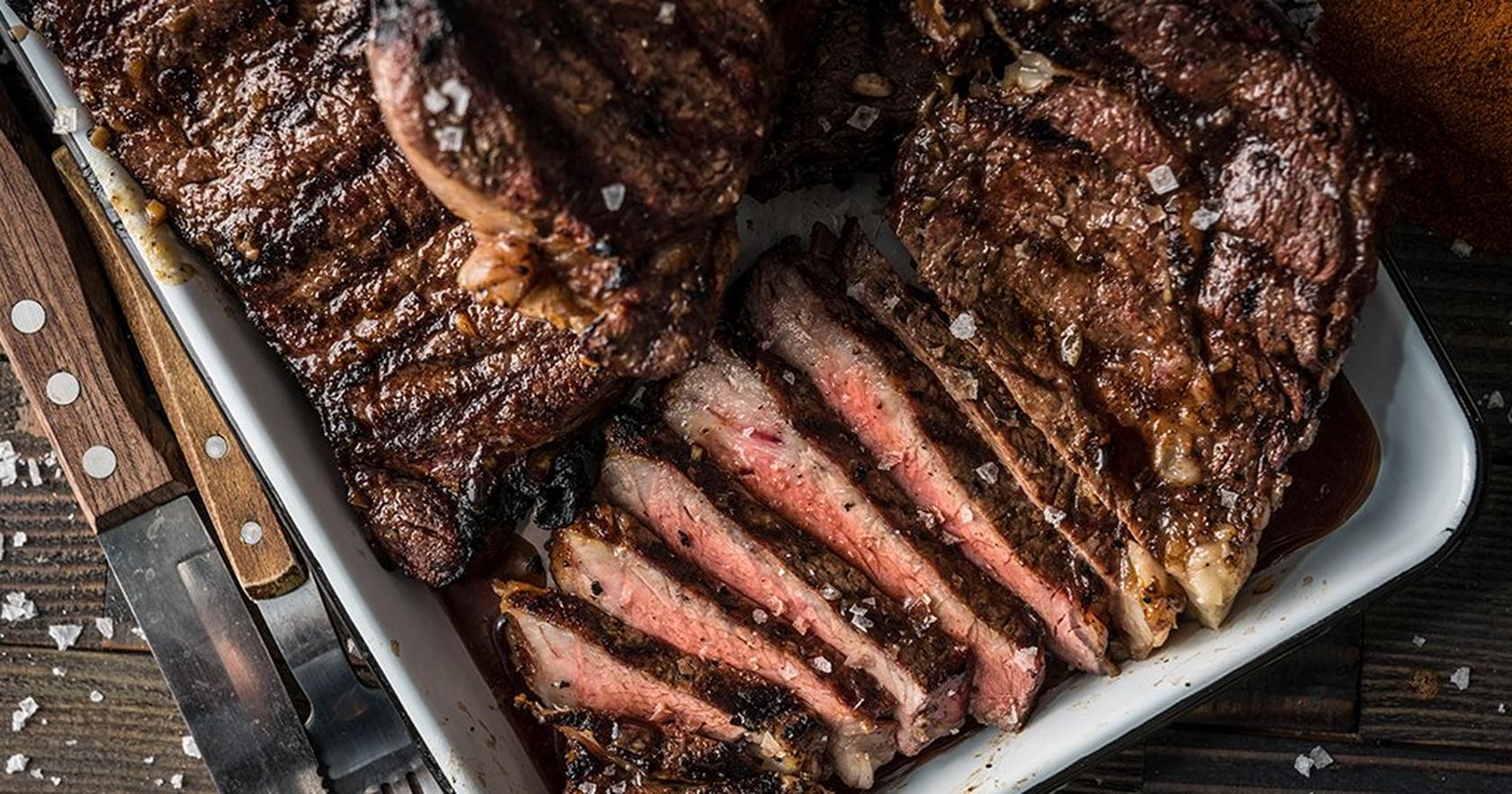
To prepare a ribeye, trim away the outside fat, then rub with olive oil and seasoning. You will then place it on a hot grill (400-500 F), turning it over every 6 minutes for even cooking and great char marks. When the steak reaches the doneness level you desire, remove it from the heat, allow it to sit for 5-10 minutes, and serve! Reverse-searing is another way to get more flavor, and it combines the best of low heat with that great char finish.
There are many delicious recipes where beef rib-eye is the star. If you like a flavorful, buttery taste that everyone will love, consider trying your hand with our Smoked Rib-Eyes with Bourbon Butter recipe. If you'd rather have a bit of spice with your rib eye, make a chili paste rub, cover your rib eye with it, and throw it on the grill. For more information, learn this recipe here.
What pellets work best for maximum flavor? You can’t go wrong with our Mesquite wood pellets.
Beef Short-Ribs
Even though they have quite a bit of meat on them, short ribs aren't always seen as the easiest cuts of beef for novice cooks to tackle. This cut from the chuck primal area (where brisket also comes from) offers rich flavor and makes a great main meal when grilled or smoked because of its high-fat content.
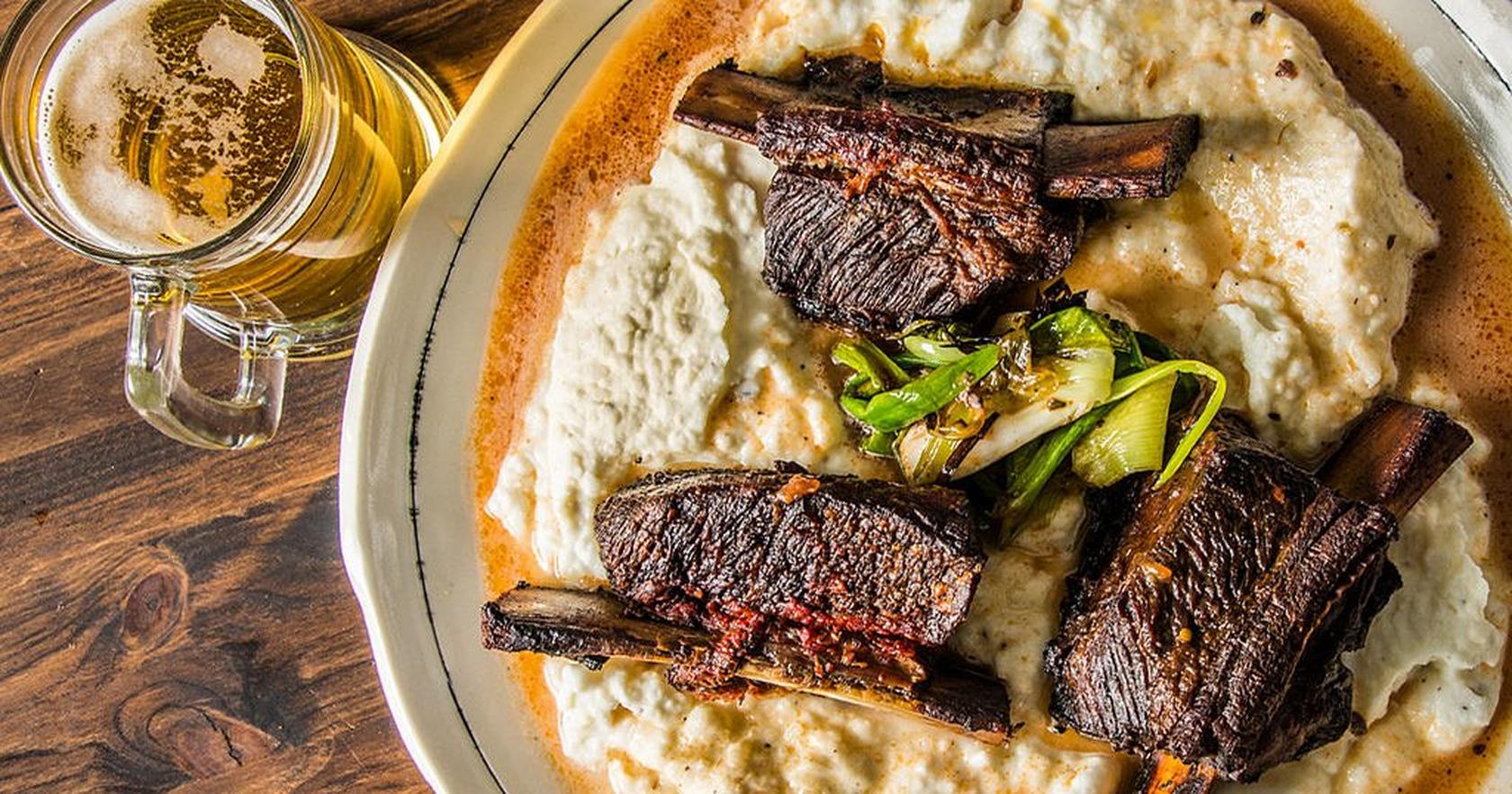
Smoking low and slow is the best way to get the most out of these rich pieces of meat, as in this classic BBQ Beef Short Ribs recipe featuring apple juice and Traeger Beef Dry Rub. To get the right results, cook over apple pellets on a 255 F grill.
Ribs can take up to take anywhere from 4 hours to 12 hours to cook, depending on the size and cooking method, or until the ribs reach an internal temperature of 205 F. Be sure to measure the temperature in the meaty part of the rib and not the bone.
These Mustard Grilled Beef Short Ribs are another way to showcase this fatty beef. Seasoned with sharp mustard and savory seasonings, this sauce adds an elegant, and addicting, touch to rich short ribs.
Skirt Steak
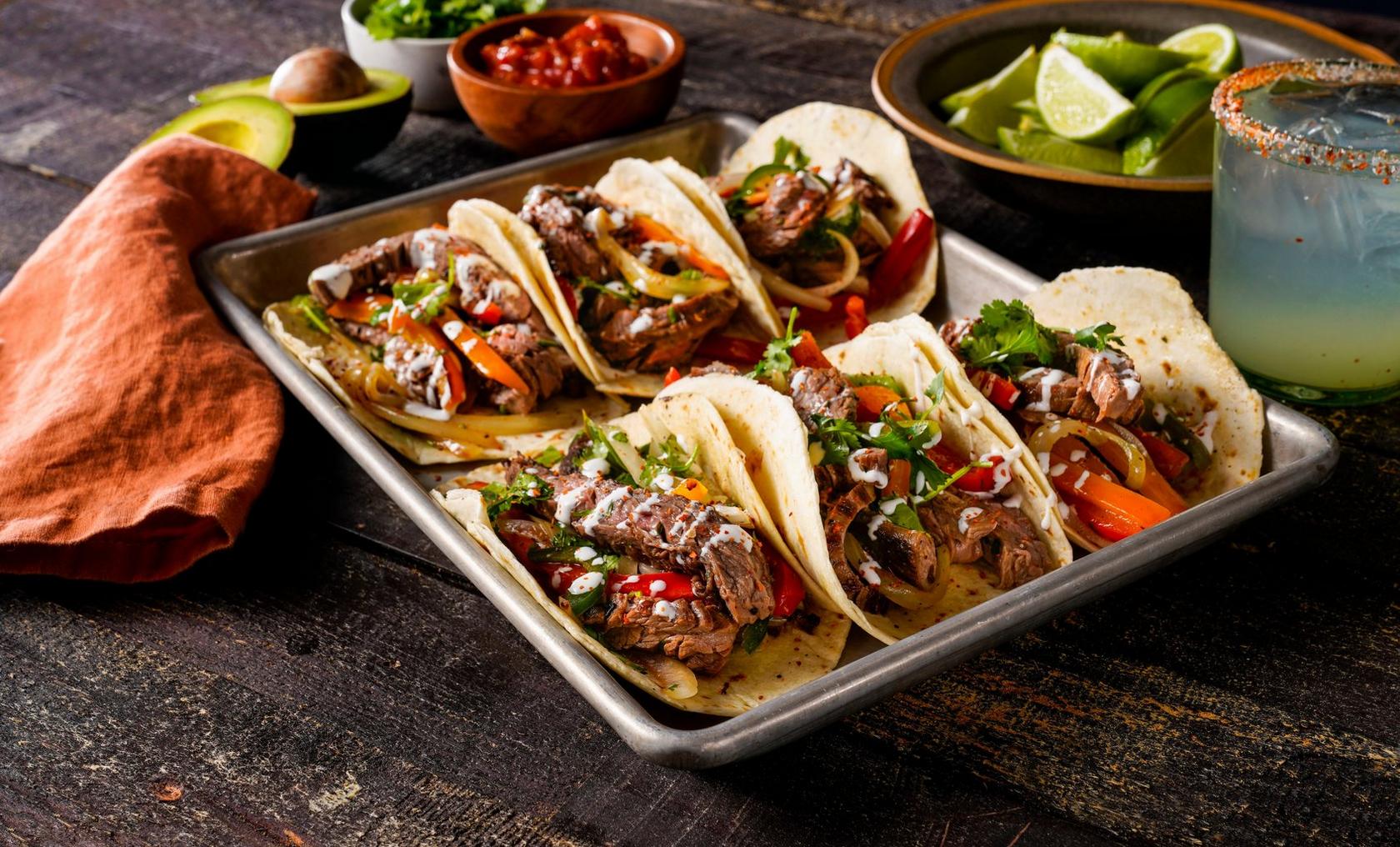
While skirt steak is a leaner option, it's no less flavorful. To make sure it cooks up tenderly, we recommend marinating this meat to give it flavor and help it stay tender while you cook. High heat gives it a beautiful color and flavor, but make sure to not leave it on too long
Mesquite brings out the best in this thin-sliced meat, which should first be smoked at 225 F for up to 45 minutes and then seared at 500 F for just a few minutes more. For a medium-rare steak, heat until the internal temperature reaches 135 F.
Skirt steak is popular in Tex-Mex dishes, where it is usually sliced thin. Two recipes to try include the Skirt Steak With Corn and Avocado Salsa and the Grilled Carne Asada with Grilled Peppers & Onions, which highlight how versatile this cut is.
New York Strip Steak
The Big Apple is home to many things, but this cut of fatty red meat may be its finest. A strip steak comes from the short loin sub-primal cut. This is the same place where we get the filet mignon, T-Bone, and the porterhouse, all expensive cuts in a restaurant. The New York strip steak is actually one-half of the T-Bone, so you may have enjoyed it when buying the larger cut of meat from the grocery store.
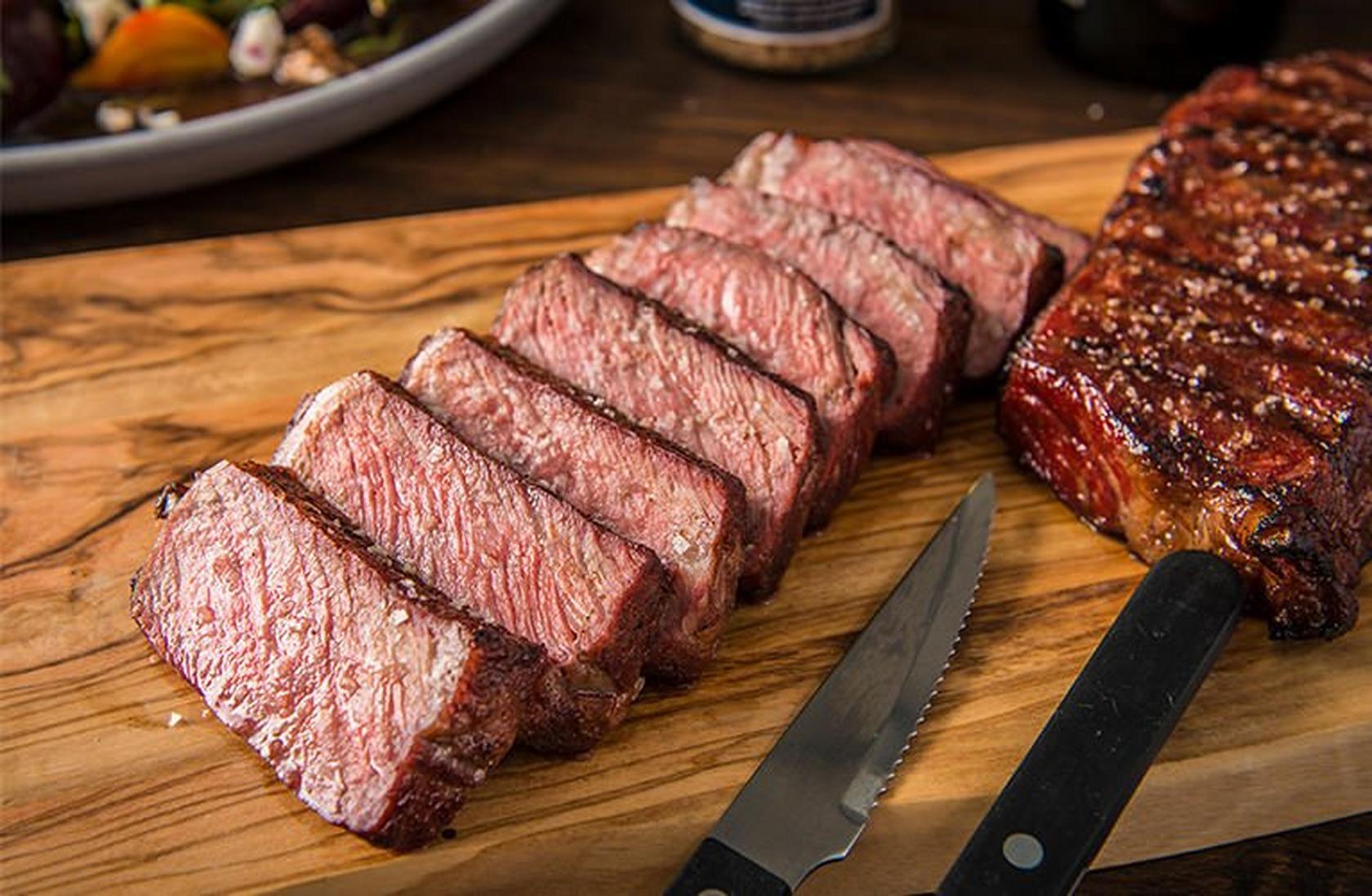
Consider giving this classic Traeger NY Strip Steak recipe a try. A little sweetness and heat, plus some bold Mesquite wood pellets, bring out the best in this tender, mouthwatering cut. One option is with marinating and seasoning with rub before allowing it to come to room temperature. Then, place it on a 500 F grill and cook until it reaches 130 F, around 4-5 minutes per side, or to your preferred doneness. Let it rest for 5 minutes before serving, and add your choice of sauce for a final finish everyone will enjoy.
If you want a simpler recipe, try out reverse searing the NY strip steak. Featuring the Traeger Beef Rub and Traeger Cherry Wood Pellets, this simple recipe showcases the juiciness of this meat and your own grilling skills.
Pork Belly
When you're ready for a tasty and rich cut of pork, the pork belly may be your best pick. This inexpensive cut comes from the belly of the pig near the loin (similar to where you can find bacon) and is a great choice for maximum richness**.**
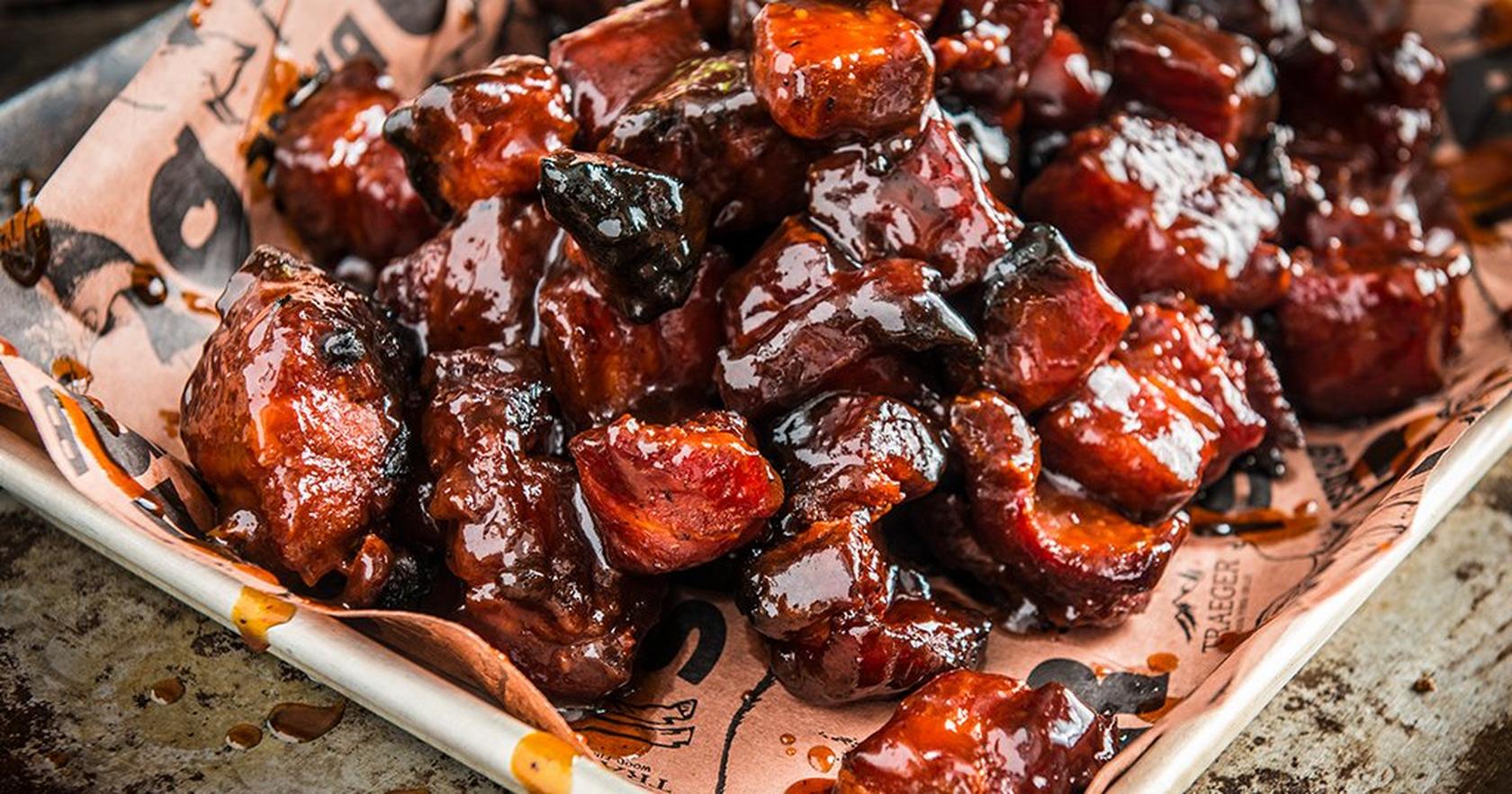
If you haven’t cooked it before, you’re in for a treat. Try out a delectable appetizer like BBQ Pork Belly Burnt Ends if you're curious about cooking this meat cut. This bite-sized food is made with a rich sauce and caramelized edges, just like what you’ve had in your favorite BBQ joint.
Another simple recipe to try out is BBQ Pork Belly which uses the goodness of apple pellets and Traeger Pork & Poultry rub. Season, then cook on a 275 F grill for up to 3.5 hours. When it reaches 200 F for an internal temperature, it's done! Allow it to rest before slicing it up for use in sandwiches, burritos, or just on a platter with your favorite sides.
T-Bone Steak
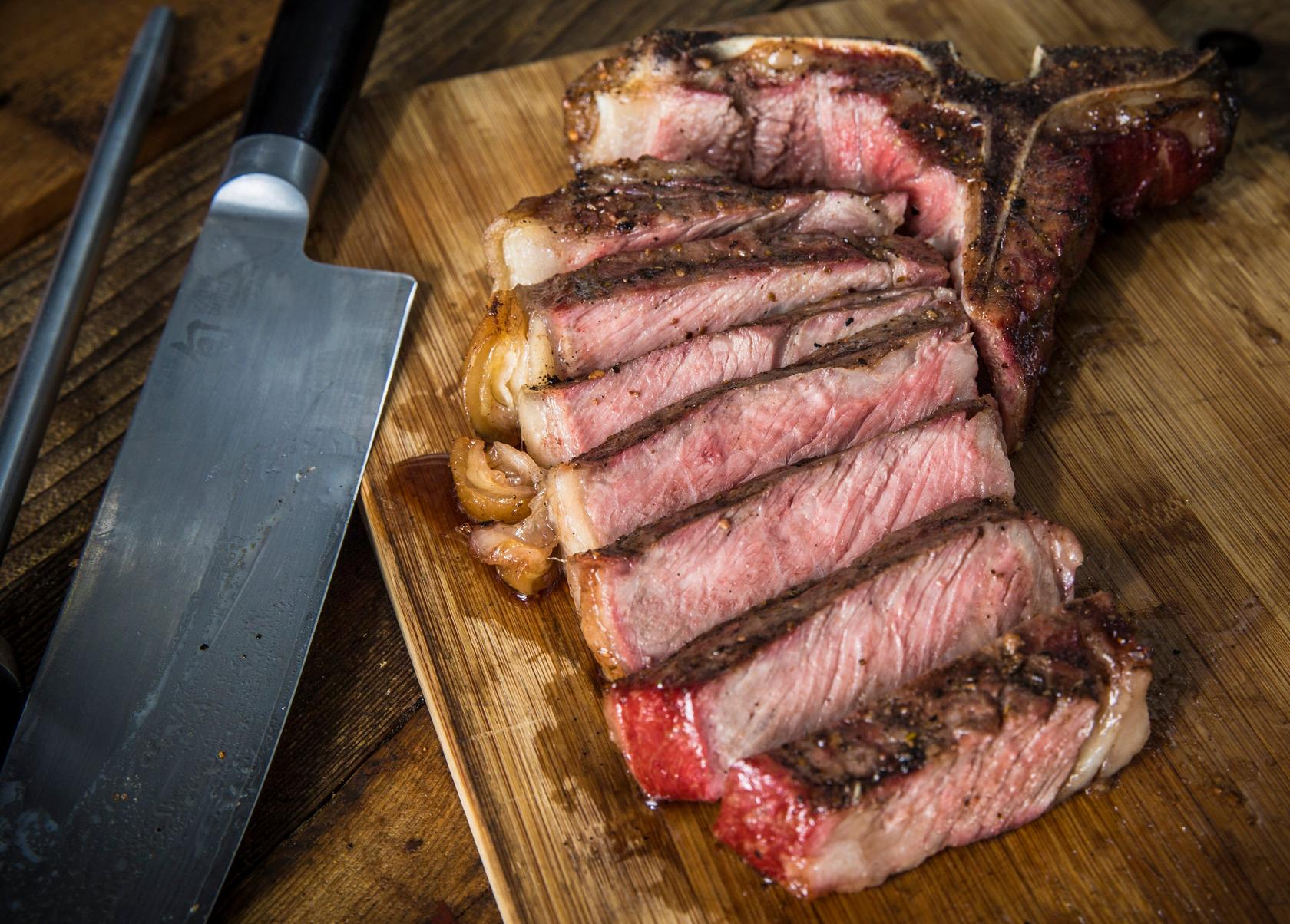
The T-bone steak, one of the most expensive cuts to enjoy in a restaurant, is actually two meat cuts. As mentioned above, a long, T-shaped bone separates the New York strip and the tenderloin or filet mignon. T-bone is a short loin cut that comes with loads of flavor and intramuscular marbling. If it’s not trimmed too much, you’ll also get a line of fat along the outside of the strip that adds moisture and flavor.
Because of the cut and fat, many people prefer T-bone in its simplest form, like this Smoked T-Bone Steaks recipe. Set your grill to 225 F, and smoke the steak for 35-45 minutes. It should reach an internal temperature of 115 F. After removing the steak, turn up the heat to 450 F. Put the steaks back on and sear for 5 minutes on each side and then top each steak with a tablespoon of butter. They will have a perfect char and be juicy on the inside.
Chicken Thighs
Chicken thighs, known for their tender, dark meat, are an excellent option when looking for a fattier meat option because they excel at retaining moisture, particularly when cooked with the skin, and shine when grilled; their higher fat content, compared to breast meat, makes them ideal for pairing with flavorful sauces and glazes, and they're a top choice for enhancing the flavor of a wide range of stir-fry dishes and adding depth to soups.
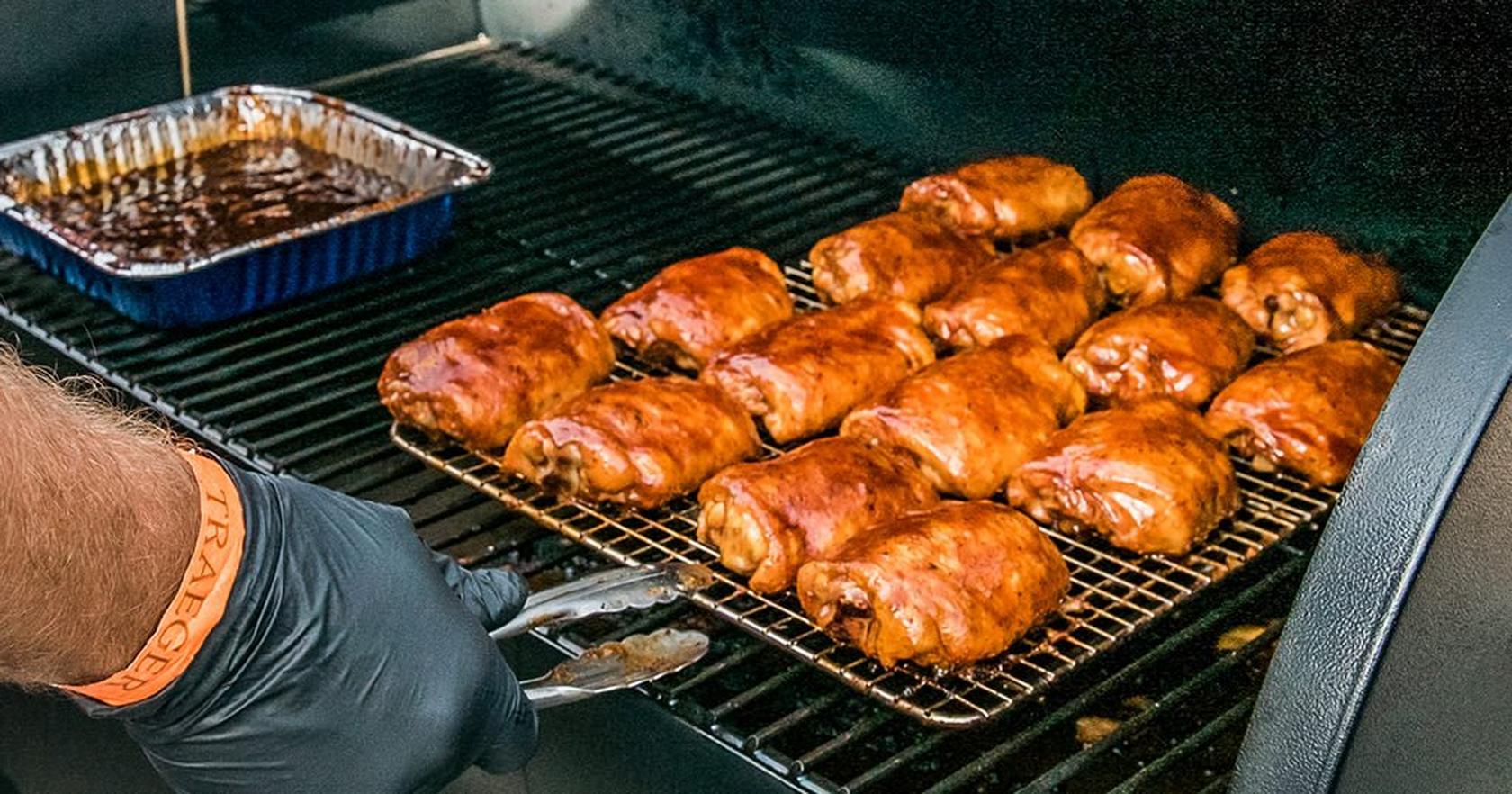
For cooking this meat on the Traeger, consider this BBQ Chicken Thighs recipe. Use cherry pellets in your Traeger at 350 F. Season the thighs with salt, pepper, and Traeger Chicken Rub. Place on the grill and cook until the insides reach 180 F or around 35 minutes. Let the chicken rest for another 5 minutes before serving it with your favorite sauce and side dishes.
Ready for a challenge? These Competition BBQ Chicken Thighs take a bit more prep work to trim the skin and inject flavor, but it’s worth it. The recipe calls for tangy apricot sauce and three sticks of butter for optimum richness.
In the world of Traeger grilling, we've always believed that greatness lies in the details. With every sizzle and whiff of smoky aroma, Traeger enthusiasts discover the true essence of indulgence, as our grills transform fatty cuts into culinary masterpieces, making every meal an unforgettable experience in flavor and tenderness.
Traeger Brisket
by Traeger Kitchen
248 Reviews
Prep Time
20 Min
Cook Time
9 Hr
Serves
8
Pellets
Hickory
Discover the ultimate Traeger brisket. This brisket recipe is given a Traeger Beef Rub coating and then smoked low and slow to tender perfection for a delicious wood-fired flavor.
Ingredients
main
| 1 | (12-14 lb) whole packer brisket, trimmed |
| As Needed | Traeger Beef Rub |
1
Season the brisket liberally with Traeger Beef Rub, then wrap in plastic wrap. Transfer the wrapped brisket to the refrigerator and let sit for 12-24 hours.
2
When ready to cook, set the Traeger temperature to 225℉ and preheat with the lid closed for 15 minutes. For optimal flavor, use Super Smoke, if available.
3
Unwrap the brisket. Insert the probe into the thickest part of the meat, then place directly on the grill grates, fat-side down. Close the lid and cook until internal temperature reaches 160℉, about 6 hours.
4
Remove the brisket from the grill and wrap in a double layer of heavy-duty aluminum foil.
5
Place the wrapped brisket back on the grill and cook until the internal temperature reaches 204℉, 3-4 hours more.
6
Remove the brisket from the grill and let rest in the foil for at least 30 minutes. Unwrap and slice against the grain. Enjoy!